Dubai, Oslo, Frankfurt
All over the world, robust cables are lifelines for aeroplanes on the ground.
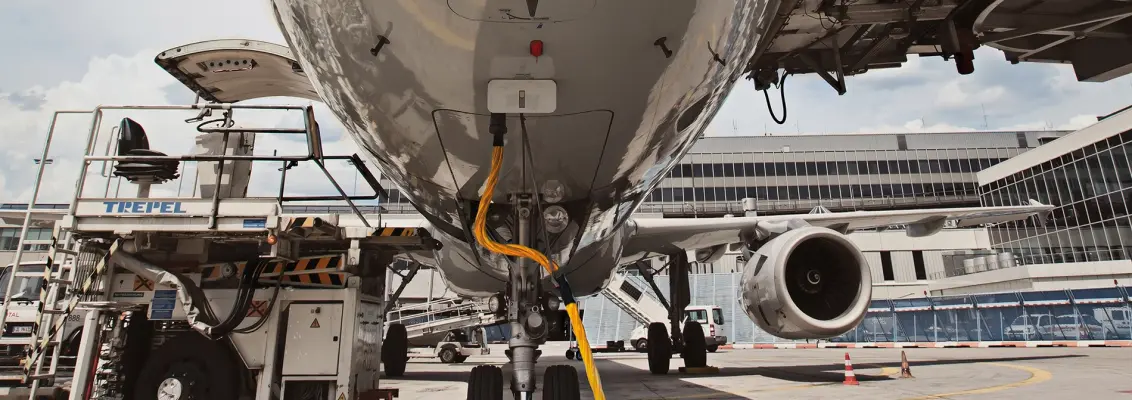
Frankfurt airport. A Boeing 737 slowly rolls into the parked position at the gate, as if drawn in by its yellow guideline. As soon as it stops, the pilot switches off the engines. At this point, the aeroplane is dependent on external power sources. A member of service staff pulls a flexible, four-conductor yellow cable under the plane from a coil hanging from the jet bridge. He then opens a flap on the bottom front section of the fuselage and uses both hands to push a black plug into the 400-Hertz socket. This so-called 400-Hertz plug and the cable connected to it are the lifeline for all the electrical systems on the aeroplane while it stands at the gate. At the same time, the systems for aeration and ventilation, replacing the water and refuelling are also underway. All the devices have one thing in common: they are produced by Cavotec in Dietzenbach or in other so-called Centres of Excellence (CoE) within the Cavotec group.
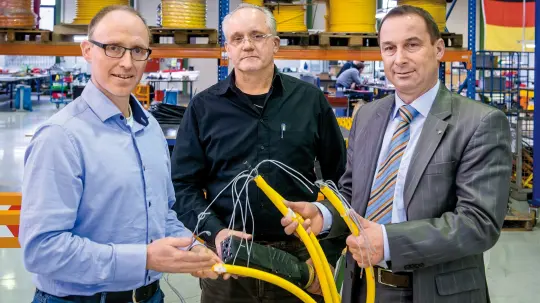
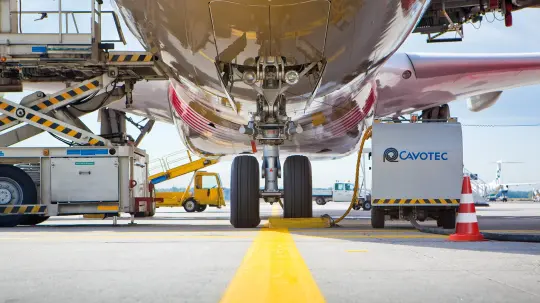
TARMAC TESTED
In Dietzenbach, a twenty-minute drive from the Frankfurt airport, Albrecht Bathon, Deputy Managing Director of Cavotec Fladung, stands in the manufacturing plant. As head of the Research and Development department, he weighs and examines a 400-Hertz plug in his hand, inspecting its connection with the yellow cable. It will soon connect a frequency inverter to an aeroplane at an airport somewhere between Melbourne and Norway. “In everyday use, cables and plugs put up with a great deal. Way up in the north, minus 20 degrees Celsius (-4°F) is not uncommon; in Dubai, the tarmac reaches heat of 60 degrees (140°F),” Bathon says. In busy airports, the cable is pulled in and out 10 times a day and frequently dragged harshly over rough concrete. “That is why we use cables from HELUKABEL,” says Michael Nees, Product Manager of the 400-Hertz plugs and cables at Cavotec. “Because of their polyurethane sheathing, they are highly resistant to wear from the hard concrete on the airport tarmac and withstand even extreme temperatures.”
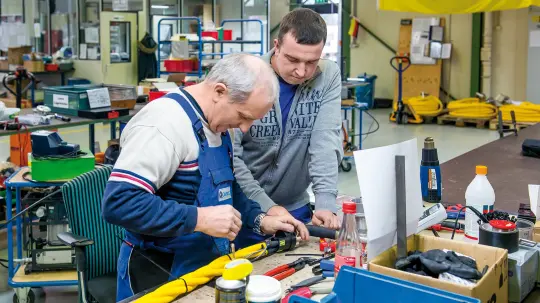
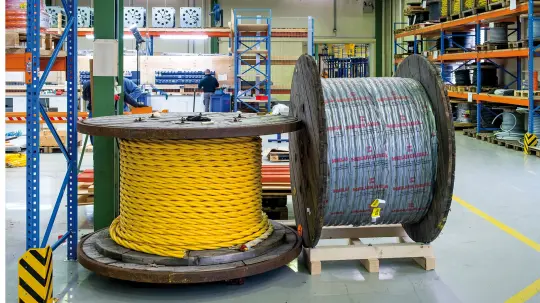
CONTINUOUS DEVELOPMENT
The power supply cables for the aeroplanes are designed especially for Cavotec by HELUKABEL. Both companies have been developing the product in close partnership for a number of years. “We gain specific feedback from our customers about our products, which we pass on to HELUKABEL. Together, we then look for a better solution and optimise it until it is ready to market,” Bathon says. The results of this partnership are visible – in demanding continuous use at the airport, the cables last for around three years or 10,000 aeroplane turnarounds.
QUALITY PAYS
The cable’s robustness is an important factor for Cavotec customers. At airports, failures result in high costs. If a supply system does not work then the gate is closed. Cavotec customers therefore demand durable solutions and are very quality-conscious. This is also the reason why the company produces a large proportion of the electrical supply systems at the Dietzenbach site. “We have calculated that it would not be cheaper for us to manufacture abroad. This is mainly due to the fact that we have highly qualified staff and a perfect infrastructure around us, which naturally includes first-class suppliers such as HELUKABEL.” With this focus at Cavotec, Bathon looks positively towards the future. “Air traffic is booming and will increase further worldwide in the coming years. With established and consistently excellent quality, we will also consistently continue to develop our solutions in the future. Then, we have good prospects to grow further and to secure the jobs of our staff.” Meanwhile at Frankfurt airport, the Boeing 737 is ready to go again. The pilot starts the engines and the supply systems are uncoupled. The service technician slowly rolls up the yellow cable. However, in a few minutes, he will drag it out again to the next plane.
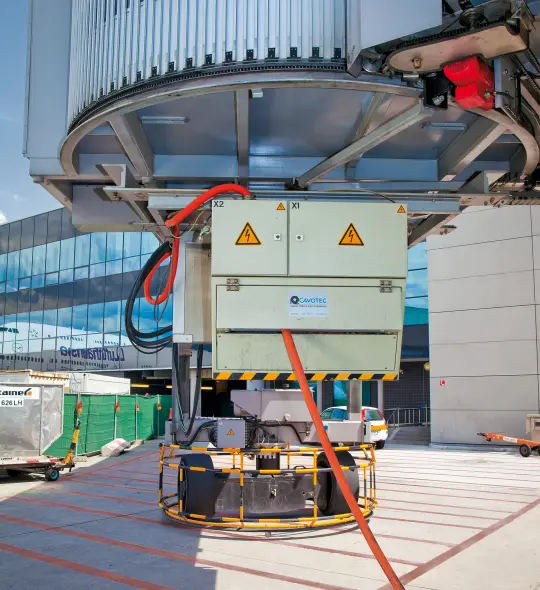
AIRPORTS FLY ON CAVOTEC
Products from Cavotec are in use at almost every airport worldwide. The company offers various systems for power supply such as coils fixed under the jet bridge or so-called pits where the cable is pulled to the aeroplane from an enclosed hole in the tarmac. Furthermore, there are tow bar systems, in which the cable is pushed to the aeroplane with a tow bar. In modern airports, as many systems as possible are installed underground. This creates a clear taxiway and fewer obstacles that could disrupt the flow of operations.
